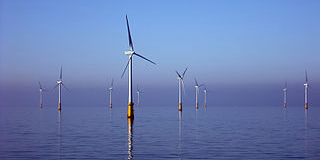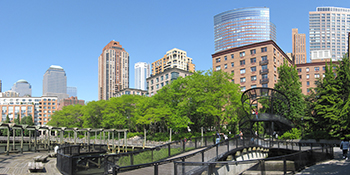
The Northeast Regional Earth System Model
Eco-Conservation
Energy
Government investment and high public and private investment results in 80% of regional energy generation coming from low carbon renewables by 2050. Regional energy generation remains centralized, but with aggressive technology adoption.
Agriculture
Minimal support for a regional food system. Agriculture in the Northeast is dominated by large ‘open-loop’ farms on prime farmland, with some adoption of ‘closed-loop’ practices. The total area of regional farmland and the agricultural labor sector decreases through the 21st Century. There is a decreased per-capita demand for food and meat consumption and government incentives for high innovation to protect ecosystem services.
Land Use
‘Eco-amenity’ based land development. Conservation of natural systems, wildlife habitat and recreational areas is prioritized with a doubling in the rate of regional conservation. Investment in dense, urban development to support open space conservation. High investment in mass transit and regional rail.
Water
Increased regulations and incentives to support both point and non-point source pollutant abatement. Increased state revolving funding which can now be spent on habitat restoration. Increased application and implementation of the Clean Water Act with updated criteria.

Image: Offshore Windmills

Image: Peace and Plenty Farm

Image: Battery Park City

Image: Riparian corridor

